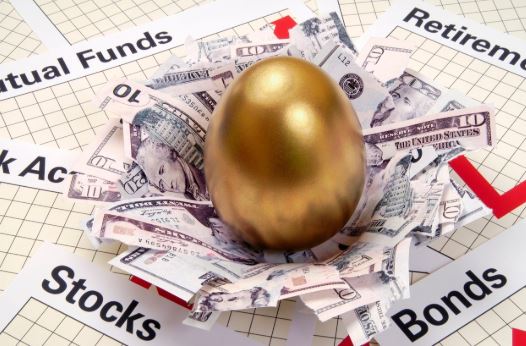Whether you’re saving for retirement, a house or other goals, investing your money can bring higher returns. Some people hold all their cash in a savings account. However, regular savings accounts earn pitiful rates — about 2.29% APY (average saving rates) —which isn’t enough to take any savings efforts to the next level.
Banks have other savings products that earn higher yields, such as:
- Money market accounts
- Certificate of deposits
- High-yield savings accounts
However, to benefit the most from these accounts, you need to make sizable deposits.
Depending on your financial goals and how fast you want a return on your money, investment options such as the stock market might be a better choice. The stock market can be risky, and there’s always a chance that you’ll lose your investment. But if you invest long-term and choose the right investments, you can receive an average yearly return around 9% or 10%, which might be the boost your money needs.
But while average returns are better than nothing, you may strive to beat these returns. Some money experts say it’s impossible to beat the stock market — primarily because there’s no way to know how stocks will perform. You may think you’ve made a good pick, only to see a chosen stock plummet in value. But if you speak with other experts, they might say it’s possible to beat average returns — although not guaranteed.
Any time you invest money in the stock market you’re taking a risk; but if you follow the tips below, you might enjoy better returns and grow your money faster.
1. Don’t Get Emotional
The value of stocks can rise and fall on a whim; and to be honest, not everyone has the stomach to invest in the market. But if you’re willing to take a chance, you need to maintain control over your emotions.
Too often, people invest in the stock market and make the mistake of selling too soon when prices drop. Naturally, nobody wants to lose all of their investment. But if you’re trying to beat average returns, you have to ride the wave and not panic with every market drop. A stock can drop today and rise to greater levels next week. If you sell too early, you can miss out on huge profits.
2. Diversification
If you’re seeking higher returns, understand the importance of diversification. Some people diversify their income to protect their finances from a potential job loss. Another income source provides a backup plan and a way to keep their head above water. The same is true with investing. Some people fall in love with one particular type of investment, such as real estate, stocks or bonds, and this is where they focus their energy. But since there are no guarantees when investing your money, you have to exercise caution and spread out your money. Don’t invest 100% of your portfolio in a single asset. If this portfolio drops significantly, your losses will be huge. But when your money is spread across different portfolios, a drop in one area won’t result in catastrophic losses. Additionally, if your different asset classes grow and over-perform simultaneously, there’s the opportunity for a better return.
3. Understand What You’re Buying
Some novice investors jump into the stock market too soon. But if you want to beat average returns, you need to understand what you’re buying. Don’t choose a stock simply because someone says it’s a hot pick. Do your research, study stocks and don’t rely on others to make a decision for you. Who is the company? How do they make their money? What’s their future outlook?
Consider the current and potential future strength of any stock before you purchase. While other investors may ignore a small startup, you might take a chance with this stock if research leads you to believe the company will be the next big thing. If you buy low and the stock rises, you may receive better than average returns on your small investment.
4. Watch Out for Fees
Some people are determined to seek a higher return; therefore, they work with brokers or a financial planner. This is a good move, especially if you don’t have a strong understanding of the stock market or investments. Just know that knowledge isn’t cheap; and fees paid to brokers can eat away at your return over the long haul. So although it’s important that you choose investments that are more likely to perform well, you also need to look for brokers who charge lower fees.
Final Word
Any type of investment has its risk, and it’s only by taking some risks that you’ll realize big gains. Of course, your risk level depends on various factors, such as how much you’re investing and your age. For example, if you’re close to retiring, this probably isn’t the best time to invest in risky stocks or other investments that might deplete your life savings. But if you’re young — perhaps in your 20s or 30s — you can afford to be a little aggressive. You may lose money, but there’s plenty of time to recoup what you lose, especially if you’re investing long-term.
Also, understand that risks don’t only apply to the stock market. If you’re investing in real estate, the risk could be buying a distressed property and putting tens of thousands of dollars into improving property with hopes of selling for a huge profit. If you buy a distressed property for $50,000, invest $30,000 of your own money, and then sell the renovated house for $160,000, that’s a return of 50 percent. Risks can be scary, but this is how some of the best investors get higher returns on their money.




